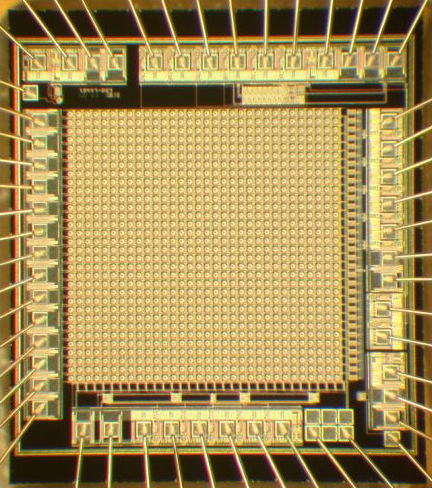
Your average “compact” camera today can record 30 frames per second at 640×480. What would you say, then, to a camera so compact it could sit inside one of your cells, so sensitive it can detect a single photon, and record at a million frames per second? Well first, you might say “keep that camera out of my cells, by god!” —But after that, the applications start occurring to you. Want to watch proteins unravel in slow motion? Go for it. Want to watch ATP shed an atom? Sounds good! Just don’t expect to get it in HD: the Megaframe photon detector array, at 128×128 photon wells, is only 16 kilopixels.
 Megaframe is an EU-funded project aimed at miniaturizing a CMOS sensor to the smallest possible level. One can only acknowledge they have done to a ridiculous extent. Each well in that picture at the top can detect a single photon, and is capable of doing so up to a million times per second. Now that even puts the D3s’ 102,400 ISO to shame. Its 50-picosecond margin of error may not be short enough for some stuff, but hey, it’s better than anything I’ve got.
Megaframe is an EU-funded project aimed at miniaturizing a CMOS sensor to the smallest possible level. One can only acknowledge they have done to a ridiculous extent. Each well in that picture at the top can detect a single photon, and is capable of doing so up to a million times per second. Now that even puts the D3s’ 102,400 ISO to shame. Its 50-picosecond margin of error may not be short enough for some stuff, but hey, it’s better than anything I’ve got.
This kind of imaging isn’t actually new, and research has been going on for a few years, but they’ve only relatively recently ended its research phase and is now in execution, if I read correctly. That means that there are labs around the world giving this sucker a spin.
Seriously, this technology has the potential to really change the way molecular biology is done, among other things. If it’s interesting to you, visit the project’s page, or the ICT Results summary.
[via Science Daily; image credit: H.R. Petty]